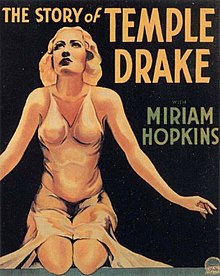
William Cuthbert Faulkner was an American writer known for his novels and short stories set in the fictional Yoknapatawpha County, based on Lafayette County, Mississippi, where Faulkner spent most of his life. A Nobel laureate, Faulkner is one of the most celebrated writers of American literature and often is considered the greatest writer of Southern literature.
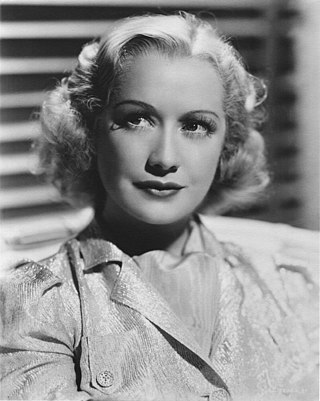
Ellen Miriam Hopkins was an American actress known for her versatility. She signed with Paramount Pictures in 1930.

The Sound and the Fury is a novel by the American author William Faulkner. It employs several narrative styles, including stream of consciousness. Published in 1929, The Sound and the Fury was Faulkner's fourth novel, and was not immediately successful. In 1931, however, when Faulkner's sixth novel, Sanctuary, was published—a sensationalist story, which Faulkner later said was written only for money—The Sound and the Fury also became commercially successful, and Faulkner began to receive critical attention.
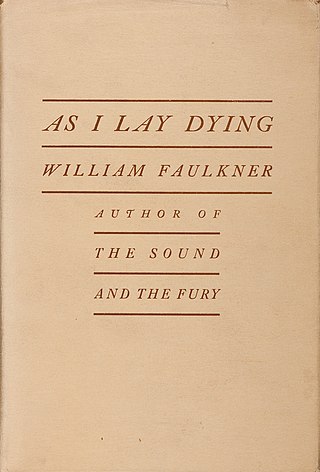
As I Lay Dying is a 1930 Southern Gothic novel by American author William Faulkner. Faulkner's fifth novel, it is consistently ranked among the best novels of the 20th century. The title is derived from William Marris's 1925 translation of Homer's Odyssey, referring to the similar themes of both works.
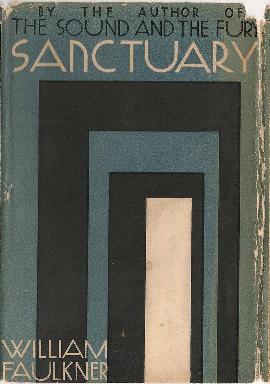
Sanctuary is a 1931 novel by American author William Faulkner about the rape and abduction of an upper-class Mississippi college girl, Temple Drake, during the Prohibition era. The novel was Faulkner's commercial and critical breakthrough and established his literary reputation, but was controversial given its themes. It is said Faulkner claimed it was a "potboiler", written purely for profit, but this has been debated by scholars and Faulkner's own friends.
"That Evening Sun" is a short story by the American author William Faulkner, published in 1931 in the collection These 13, which included Faulkner's most anthologized story, "A Rose for Emily". The story was originally published, in a slightly different form, as "That Evening Sun Go Down" in The American Mercury in March of the same year.
To Have and Have Not is a 1944 American romantic war adventure film directed by Howard Hawks, loosely based on Ernest Hemingway's 1937 novel of the same name. It stars Humphrey Bogart, Walter Brennan and Lauren Bacall; it also features Dolores Moran, Hoagy Carmichael, Sheldon Leonard, Dan Seymour, and Marcel Dalio. The plot, centered on the romance between a freelancing fisherman in Martinique and a beautiful American drifter, is complicated by the growing French resistance in Vichy France.
Ron Hansen is an American novelist, essayist, and professor. He is known for writing literary westerns exploring the people and history of the American heartland, notably The Assassination of Jesse James by the Coward Robert Ford (1983), which was adapted into an acclaimed film.

Requiem for a Nun is a work of fiction written by William Faulkner. It is a sequel to Faulkner's early novel Sanctuary, which introduced the characters of Temple Drake, her friend Gowan Stevens, and Gowan's uncle Gavin Stevens. The events in Requiem are set in Faulkner's fictional Yoknapatawpha County and Jackson, Mississippi, in November 1937 and March 1938, eight years after the events of Sanctuary. In Requiem, Temple, now married with a child, must learn to deal with her violent, turbulent past as related in Sanctuary.
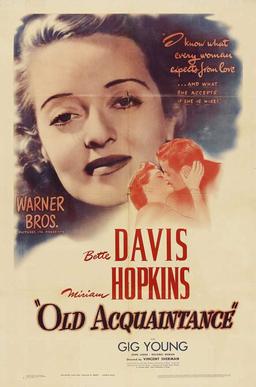
Old Acquaintance is a 1943 American drama film released by Warner Bros. It was directed by Vincent Sherman and produced by Henry Blanke with Jack L. Warner as executive producer. The screenplay by John Van Druten, Lenore Coffee and Edmund Goulding was based on Van Druten's 1940 play of the same title.

The Story of Temple Drake is a 1933 American pre-Code drama film directed by Stephen Roberts and starring Miriam Hopkins and Jack La Rue. It tells the story of Temple Drake, a reckless woman in the American South who falls into the hands of a brutal gangster and rapist. It was adapted from the highly controversial 1931 novel Sanctuary by William Faulkner. Though some of the more salacious elements of the source novel were not included, the film was still considered so indecent that it helped give rise to the strict enforcement of the Hays Code.

No Orchids for Miss Blandish is a 1948 British gangster film adapted and directed by St. John Legh Clowes from the 1939 novel of the same name by James Hadley Chase. It stars Jack La Rue, Hugh McDermott, and Linden Travers, with unbilled early appearances from Sid James, as a barman, and Walter Gotell, as a nightclub doorman. Due to the film's strong violence and sexual content for its time, amongst other reasons, several critics have called it one of the worst films ever made.
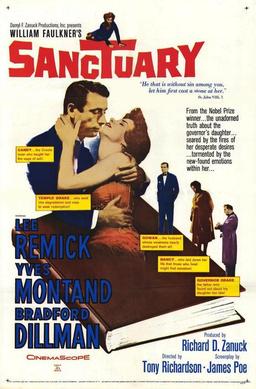
Sanctuary is a 1961 drama film directed by Tony Richardson. The film, based on the William Faulkner novels Sanctuary (1931) and Requiem for a Nun (1951), is about the black maid of a white woman who kills the latter's newborn in order to give her employer a way out of a predicament, and then faces the death penalty.
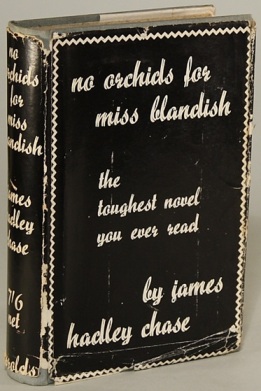
No Orchids for Miss Blandish is a 1939 crime novel by the British writer James Hadley Chase. It was a critical and commercial success upon release, though it also provoked considerable controversy due to its explicit depiction of sexuality and violence. In 1942, the novel was adapted into a stage play and in 1948 it became a British film. The novel became particularly popular with British servicemen during World War II.

William Faulkner (1897—1962) was an American writer who won the 1949 Nobel Prize in Literature. He is best known for his novels and short stories set in the fictional Yoknapatawpha County, a stand-in for his hometown of Oxford in Lafayette County, Mississippi.
Gavin Stevens is a lawyer and the county attorney in Jefferson in Faulkner's fictional Yoknapatawpha County, Mississippi. He was educated at Harvard and Heidelberg universities.
Requiem for a Nun is a play by Albert Camus, adapted from William Faulkner's 1951 novel of the same name. The play was published in 1962.
Popeye is a character in William Faulkner's 1931 novel Sanctuary. He is a Memphis, Tennessee-based criminal who rapes Temple Drake and introduces her into a criminal world which corrupts her.
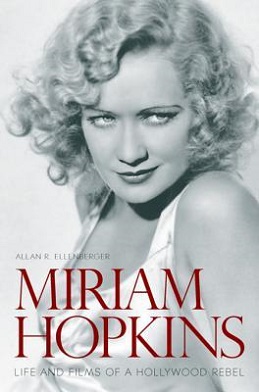
Miriam Hopkins: Life and Films of a Hollywood Rebel is a 2017 non-fiction book published by the University of Kentucky Press and written by Allan R. Ellenberger concerning the actress Miriam Hopkins.
